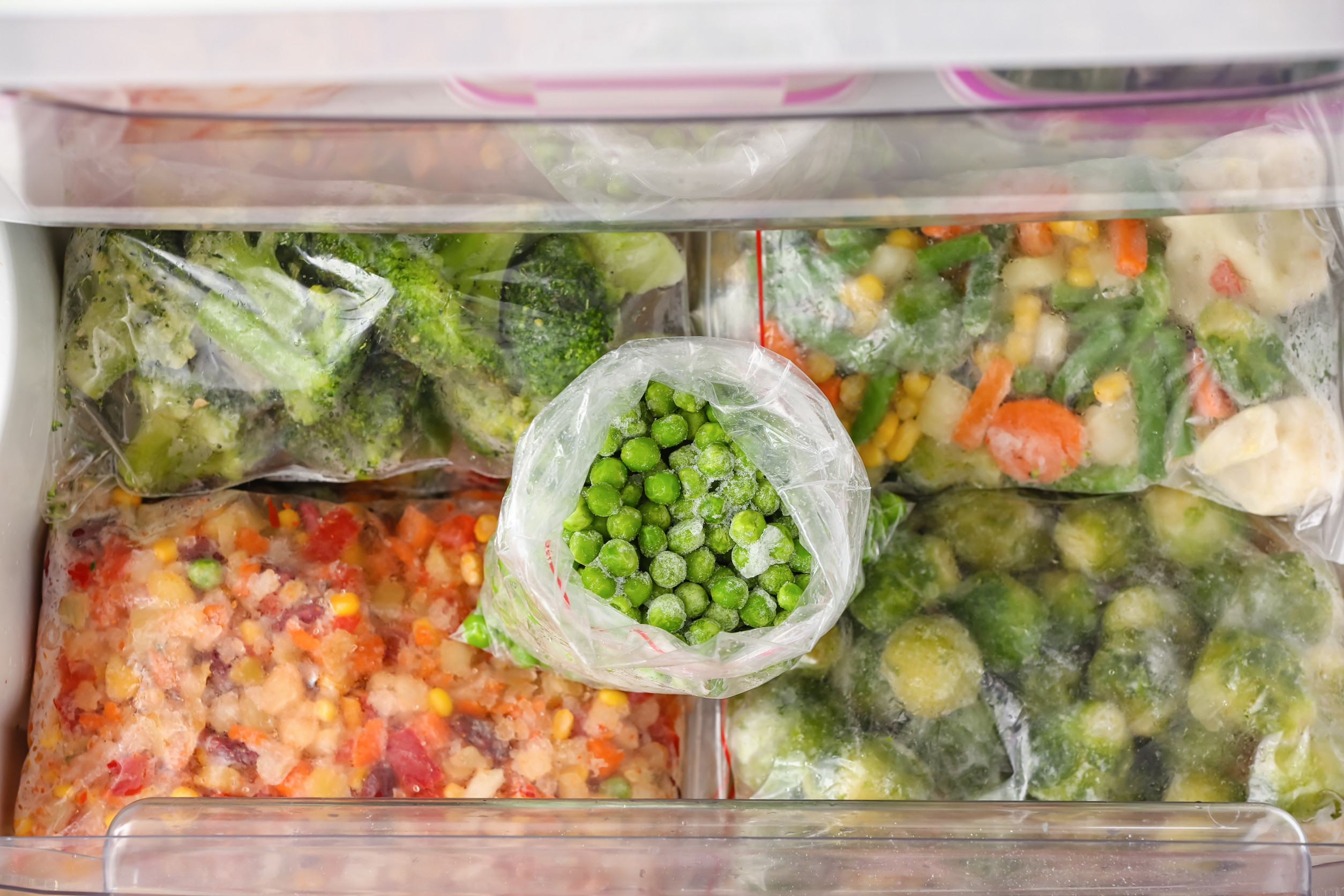
Grab a bag of frozen vegetables expecting peak nutrition—and you might be in for a surprise. While freezing locks in nutrients initially, over time and under poor storage conditions, frozen vegetables can degrade in ways you may not expect. Knowing which vegetables suffer the most nutrient loss helps you shop smarter, store better, and cook to preserve what’s left. In this article, you’ll discover 10 common frozen vegetables that lose nutrition before use, and practical tips to minimize losses. Let’s dive into which veggies to watch—and how to treat them right.
1. Frozen Peas
Frozen peas are picked at peak ripeness and blanched to lock in nutrients, but vitamin C and some B‑vitamins can still decline during extended storage. Research shows that peas lose a significant portion of vitamin C during processing, and slow degradation may continue even at freezer temperatures. Freeze‑thaw cycles, especially from inconsistent freezer use, can break down cell structure and accelerate nutrient loss. For best nutrition, consume frozen peas within six to twelve months as recommended storage guidelines suggest. Beyond that, quality and vitamin content steadily decline even without visible freezer burn.
2. Frozen Spinach
Frozen spinach retains much of its folate and vitamin C initially, thanks to flash‑freezing, but these water‑soluble vitamins degrade over time. Studies find lower β‑carotene and vitamin C levels in spinach compared to fresh when stored long-term. Even properly sealed spinach can lose antioxidants gradually as residual enzyme activity continues despite freezing. Oxygen exposure during storage can trigger oxidation, further impacting vitamin stability. Use frozen spinach within three to six months for best nutritional value.
3. Frozen Broccoli
Frozen broccoli is nutritious initially but can lose vitamin C and folic acid during blanching and storage. Blanching itself causes up to 30% vitamin C loss in some vegetables. During storage, slow enzyme reactions and oxidation in less‑than‑ideal conditions can further degrade nutrients. Ice crystal formation from repeated freeze‑thaw events damages cellular integrity and accelerates nutrient loss. Broccoli retains most nutrients for up to a year if kept at −18 °C or lower, but deteriorates after that.
4. Frozen Carrots
While frozen carrots retain carotenoids and fiber well, they lose some water‑soluble vitamin C and B complex during blanching. Research indicates that carrots have relatively stable vitamin A analogs, but still suffer losses in vitamin C. Extended frozen storage can further reduce antioxidants gradually, though more stable than peas or spinach. Improper storage with temperature fluctuations causes ice crystals and cell damage, decreasing texture and vitamins. Eat carrots within 8–12 months for optimal nutrition.
5. Frozen Green Beans
Frozen green beans initially retain substantial nutrients, but over time, vitamin C and some B vitamins degrade. Refrigerated fresh beans lose nutrients rapidly, but frozen ones still decline slowly in the freezer despite initial blanching. β‑carotene remains stable in green beans longer than in peas or spinach, but vitamin C still drops significantly over storage. Freeze‑thaw cycles and oxygen exposure promote oxidative loss and texture decline. Use within six months for best nutrient retention.
6. Frozen Corn
Frozen corn retains many nutrients well, but vitamin C and folate may decline during the blanching process. Post‑blanching losses are modest, and most nutrients remain stable if stored properly at −18 °C or lower. That said, freeze‑thaw cycles and temperature fluctuation can degrade sensitive vitamins over time. Corn’s antioxidant levels remain fairly stable, though extended storage (beyond a year) leads to nutrient drop‐off. Buying and consuming frozen corn within six to twelve months helps minimize nutritional decline.
7. Frozen Cauliflower
Frozen cauliflower suffers losses of vitamin C and folic acid during blanching and prolonged freezing. The blanching step deactivates enzymes but also reduces heat‑sensitive nutrients slightly. Continued slow enzyme activity and oxidation over months further erodes nutritional quality. Ice crystal damage from poor freezing accelerates the degradation of texture and vitamins. Cauliflower is best used within nine months to avoid significant nutrient loss.
8. Frozen Mixed Vegetables
Mixed frozen vegetables combine multiple types that each may lose unique nutrients over time. For example, peas and corn might lose vitamin C, while carrots lose water‑soluble vitamins during storage. Blanching losses are compounded across different veggies, and slow decline continues throughout freezer storage. Freeze‑thaw cycles in mixed bags—especially once opened—lead to accelerated quality decline. Consume mixed vegetables within six months for consistent nutrition across components.
9. Frozen Edamame
Frozen edamame retains protein and fiber quite well, but folate and some B‑vitamins slowly degrade during storage. Blanching causes modest initial losses, but freeze storage slows further degradation considerably. However, repeated thawing and refreezing damage plant cell structure and accelerate nutrient loss. Exposure to oxygen through compromised packaging increases vitamin oxidation. Treat edamame like other frozen vegetables: eat within a year while sealed and stored properly.
10. Frozen So Spinach/Leafy Greens Mix
Leafy greens mixes—spinach with kale, chard, or Swiss chard—commonly lose vitamin C and folate during blanching and over long-term storage. Flash freezing preserves most nutrients initially, but water-soluble vitamins remain susceptible to slow decline. Freeze‑thaw cycles interrupt cell integrity and hasten nutrient loss. Exposure to air in partially opened bags causes oxidation that further depletes vitamins. Aim to consume leafy mix within three to six months for best results.
The Bottom Line on Frozen Vegetables Nutrition
Though freezing initially locks nutrients in, over time and under poor storage conditions, frozen vegetables—especially those high in vitamin C or water‑soluble B vitamins—gradually lose nutritional value. Blanching, while essential to stop enzyme activity, causes some initial losses, and prolonged freezer storage, temperature changes, packaging issues, and freeze‑thaw cycles amplify declines. Stick to sealed packaging, keep your freezer at −18 °C or below, and use vegetables within recommended windows—generally 6–12 months depending on type—to preserve maximum nutrition. Prioritize steaming or microwaving to cook—methods that retain more vitamins than boiling. With smart buying, storage, and cooking, frozen vegetables remain an excellent and nutritious choice year-round.
Which frozen vegetable mix do you rely on—and how long do you usually store it before use? Share your experience and storage tips in the comments!
Read More
10 Frozen Foods That Don’t Cook Evenly No Matter What You Do
7 Frozen Meals That Disappear Fast in the South but Rot in the North
The post 10 Frozen Vegetables That Lose Nutrition Before You Use Them appeared first on Grocery Coupon Guide.







